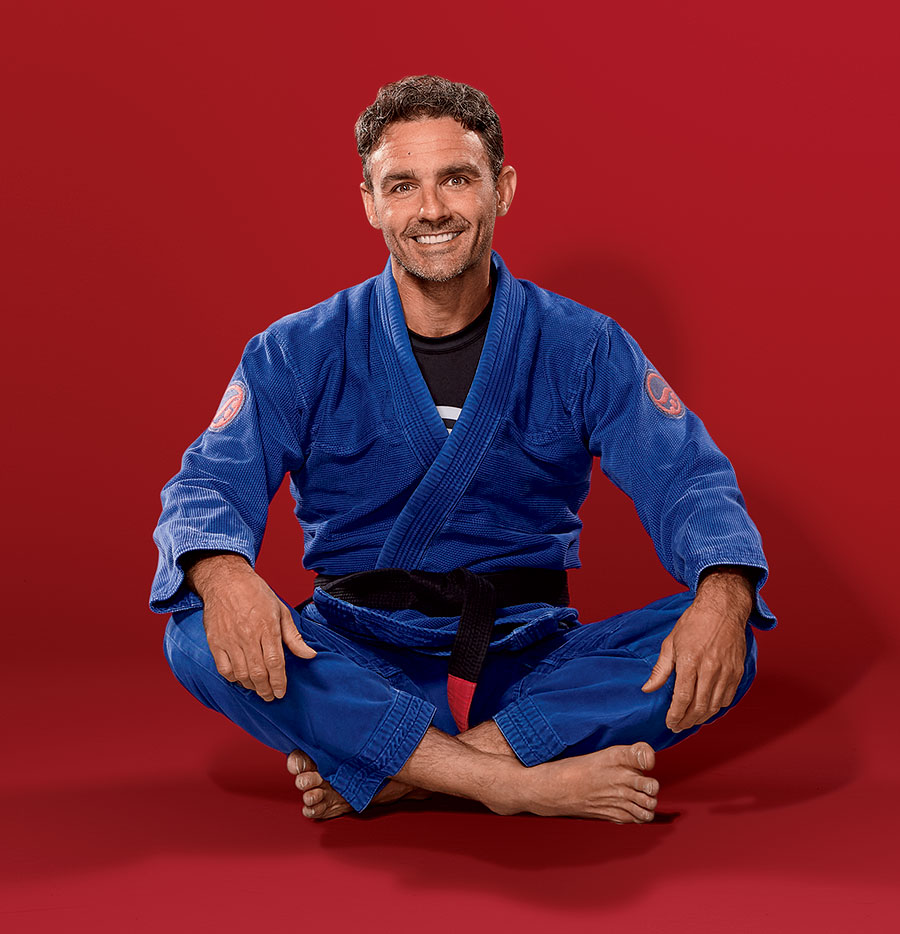
In nonpandemic eras, Mulroy splits his time between litigating for multimillion-dollar settlements for plaintiffs in liability or medical malpractice lawsuits and competing in Brazilian jujitsu (he’s a black belt). He’s had to get more creative recently with both his work and his workouts, taking depositions by Zoom and kettlebells to the balcony of his River North apartment. Here’s how the 47-year-old partner at Salvi, Schostok & Pritchard has adapted.
Training routine
“Before coronavirus hit, I was training four or five times a week at Valko Brazilian Jiu-Jitsu Academy. You work on a particular set of moves for 45 minutes, then it’s open-mat sparring. You point at somebody, they nod, then you start fighting. Afterward you give them a high-five. One or two days a week, I strength-train at HiFi. I focus on compound lifts — dead lifts, barbell rows, squats, and standing military press. I also try to do yoga at CorePower to maintain my flexibility.”
Stay-at-home sweating
“When the gym closed, I used what I had here — a jump rope and a 50-pound kettlebell. One game I came up with was to pretend I was fighting four six-minute rounds. I had to keep the kettlebell moving. Every time I put it down, I would imagine losing the match. And jumping rope is a great workout if you keep your feet underneath you like a boxer.”
Injured reserve
“Jujitsu looks rough, but because it’s technical, injuries are less common than you’d think. Still, they happen. Two years ago, I tore my meniscus the day before a big jury trial. I’m meeting the opposing lawyers for the first time, and I walk in with a cane. Another time, I had to have my ear drained so I wouldn’t get cauliflower ear right before I left for a big mediation in Seattle. They didn’t have the right bandage, so they wrapped my head like somebody in the Civil War.”
Eating plan
“When I remember to eat breakfast, I will have eggs or a smoothie. I usually make lunch ahead of time — chicken breast with rice and beans, or salad with protein. My typical weeknight meals are really basic — baked chicken breast or salmon with rice or quinoa. I drink red wine, and I always have something after dinner, like Toblerone, or Talenti pistachio gelato.”
Lean lifestyle
“When I started, I was fighting lightweight — 167 pounds. The guys fighting featherweight had frames similar to mine, so my coach suggested dropping down. Featherweight is 154, but you have to weigh in with the gi — it’s like a kimono — and belt, so it’s more like 152. I’d cut most carbs, eliminate sugar, and work out twice a day before a competition. One time I didn’t make weight and had to go for a run to sweat the pound off. Eventually I started maintaining closer to featherweight and was less miserable.”



Comments are closed.